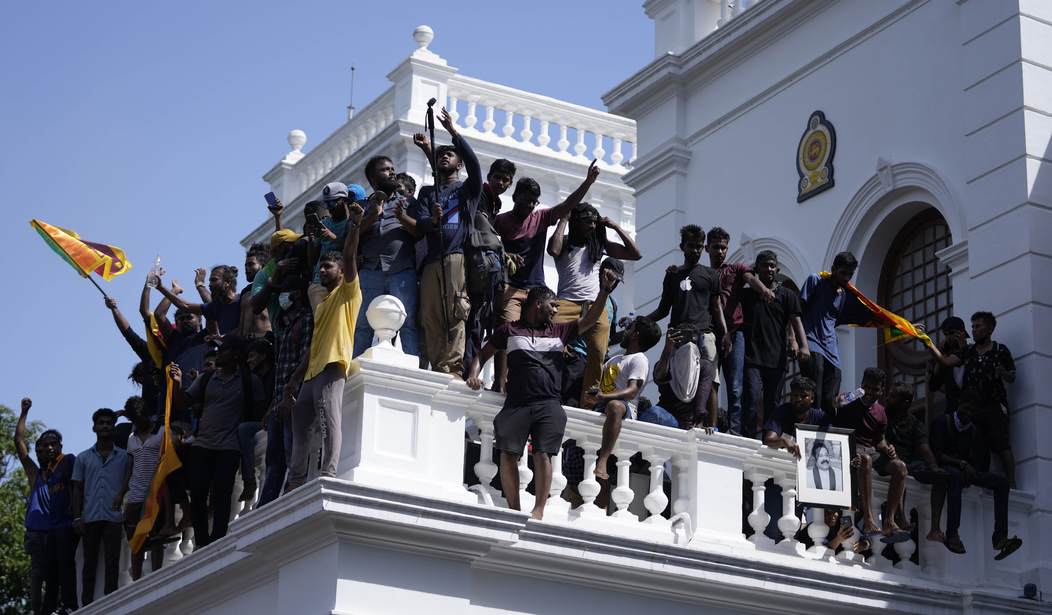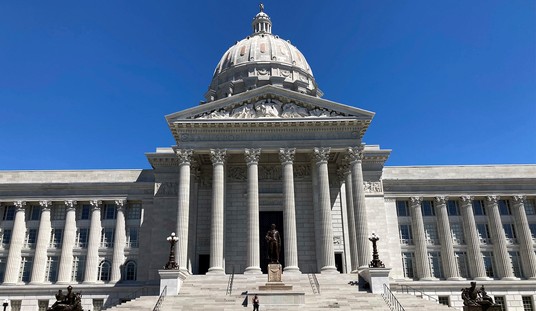During the BLM riots, we saw liberal media try to sell us a story that they were “mostly peaceful” even as flames were consuming buildings right behind the reporters trying to sell us that lie.
Why? Because they were leftist riots so any violence had to be downplayed by the liberal media.
On the other hand, with Jan. 6, we see the media still obsessing on it, a year-and-a-half later, and the Democrats hoping to use it to take down a once and possibly future president, although that effort hasn’t been going well for them.
How far over the line has the media gone on it? The NY Times gave us a good example, in a new article about the fall of the government in Sri Lanka this month.
Protesters had been protesting against the government for months because of how the government trashed the economy, in part, because of their climate goals.
Myron Ebell, the director of the Competitive Enterprise Institute’s Center for Energy and Environment, noted that because of this, “all the crop yields have collapsed, they don’t have any tea to sell because the tea harvest is so low. So, they have no revenues to buy stuff from overseas and their own food production for people to eat in Sri Lanka is not there. They’re starving to death.”
“This is all the result of a government decision to limit the access to commercial fertilizer,” Ebell told Fox News Digital.
The government fell this month when the protesters stormed the presidential palace and forced the president and his officials to resign.
But according to the NY Times, what happened in Sri Lanka was sort of like a garden party and mostly peaceful, “much more peaceful” that the Jan. 6 riot. New York Times writer German Lopez interviewed colleague Emily Schmall about what happened.
YOU CAN'T MAKE THIS UP! The New York Times says that Sri Lankans forcefully overthrowing their government was "much more peaceful" than January 6.
And I bet they still wonder why they're called Fake News… pic.twitter.com/4WDqWkG4ZM
— Tim Young (@TimRunsHisMouth) July 24, 2022
After about 24 hours, a gleefulness overtook the place, and some people swam in the president’s pool. They’d done it: They had forced this extremely powerful president — who was accused of war crimes, who was feared — to leave his own home and even the country. But they did it peacefully, without taking up arms.
So it was an atmosphere of joy and disbelief, with a bit of absurdity and a bit of comedy thrown in — a very Sri Lankan sort of revolution, relatively low-key and polite.
I can’t help but compare this to the insurrection at the U.S. Capitol. This seemed much more peaceful.
Oh, yeah. I couldn’t help thinking of it either.
There were several differences. For one, these people were not armed. It was also a bit spontaneous, and there was no clear leader. They did not do it in association with any politician or political party.
But the big difference was that these protesters had widespread support. Ordinary Sri Lankans were applauding them and even participating. People who would otherwise never be involved in activism or protests were happily wandering around the properties, enjoying themselves and basking in the success of this movement.
What she leaves out, as we reported, at least 39 were injured in the presidential palace takeover, at least 75 collectively including clashes near the parliament and the prime minister’s house being set on fire. I’m thinking that maybe we’re in “mostly peaceful” territory when the NY Times tries to sell us this story. Not to mention all the violence in the months leading up to the storming of the palace. In May, more than 200 people were wounded, eight killed and more than 50 homes of government officials were destroyed.
— Wittgenstein (@backtolife_2023) July 24, 2022
But imagine how the NY Times is cheering an actual coup, where the people rose up and threw out their government — but claiming it’s “more peaceful” than Jan. 6. Not to mention casting Jan. 6 as an “armed” attack. Talk about one heck of a gaslighting job.
Sri Lanka is a cautionary tale about what happens when the government places climate goals ahead of the survival of the people. One that our government seems bent on ignoring. Not surprisingly, Schmall left out that part too — about the fertilizer — when describing what happened in Sri Lanka, instead blaming COVID. We’re seeing it with things like the Dutch farmworker protests as well. But far be it from the NY Times to report news when they can push propaganda.













Join the conversation as a VIP Member